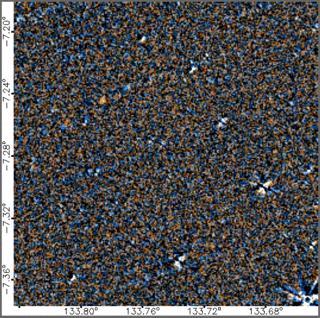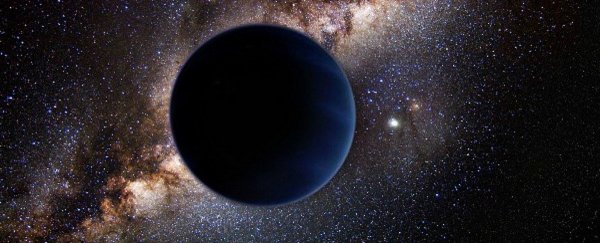Since January last year, evidence of a mysterious and huge planet lurking at the edge of our Solar System has been building. And astronomers want your help to find it.
No one has actually spotted this so-called ' Planet Nine' as yet, but researchers have shown that something is tugging at the objects in the Kuiper belt in a way that can't be explained by the eight planets we know of.
The candidate that best fits the models is an elusive ninth planet that takes up to 20,000 years to orbit the Sun, and is 10 times more massive than Earth.
You'd think something that big would be easy to spot, but the team that first made the case for the existence of Planet Nine say that the mysterious world is so distant, it could have easily been hiding in plain sight.
The best estimates suggest that the planet is about 149 billion km (92.6 billion miles) from the Sun - or 75 times more distant than former planet Pluto.
"If it exists, Planet 9 could be large - maybe 10 times the mass of Earth but orbiting far out beyond the Kuiper Belt," said astronomer Adam Schneider from Arizona State University, who's part of a new citizen science project to hunt down the planet.
"Yet it must be extremely dim and hard to find."
Because of this, astronomers are turning to the public for help, launching a new citizen science project called Backyard Worlds: Planet 9.
The best part is, you can take part without having to leave your couch.
The project asks science lovers to trawl through brief videos made from images captured by NASA's Wide-field Infrared Survey Explorer (WISE) to see if there are any traces of Planet Nine.
The movies highlight objects that have gradually moved across the sky, and they need your help to figure out if any of them could be the mysterious Planet Nine - or anything else that's hiding between the edge of our Solar System and our next closest star.
NASA already runs automated computers searches on these regions of space looking for new objects, but it can easily miss things due to all the background noise.
"There are just over four light-years between Neptune and Proxima Centauri, the nearest star, and much of this vast territory is unexplored," said lead researcher behind the project Marc Kuchner, from NASA's Goddard Space Flight Centre.
"Because there's so little sunlight, even large objects in that region barely shine in visible light. But by looking in the infrared, WISE may have imaged objects we otherwise would have missed."
"People who join in the Backyard Worlds search bring a unique skill to the search: the human ability to recognise movement," adds Schneider.
But it's not just a textbook-rewriting planet that you might spot in the footage. The astronomers are also looking for traces of brown dwarfs, mysterious low-mass objects that are somewhere between a giant planet and small star in size.
These objects emit very little light at visible wavelengths, but glow with infrared radiation, which means they're picked up by WISE data.
"Brown dwarfs are somewhat mysterious," said Schneider. "They have masses of less than 80 times that of Jupiter, because that's the point at which nuclear fusion begins and an object becomes by definition a star."
But right now, there's no real limit to how small a brown dwarf could be, which is why we need to find more of them to get a better idea of how they work.
"If we find one that's, say, five times the mass of Jupiter and it's orbiting a star, we'd call it a planet," Schneider explained. "But an identical object could also be floating freely in space, unattached to any star, and we'd call it a brown dwarf."
In the footage below, you can see a previously known brown dwarf as an orange dot moving across the upper left of the image.
 NASA
NASA
This is the type of footage that citizen scientists will be asked to scan, looking for other moving objects.
And if you spot the right one, you could be at the centre of one of the biggest discoveries in the 21st century.
"Backyard Worlds: Planet 9 has the potential to unlock once-in-a-century discoveries, and it's exciting to think they could be spotted first by a citizen scientist," said team member Aaron Meisner, from the University of California, Berkeley.
Other experts are less optimistic about the prospects of finding Planet Nine.
"I don't think they will find Planet Nine - as I don't think it's there. But there are possibly other classes of objects to be found in the WISE data," astronomer Chris Tinney from the University of New South Wales, who isn't involved in the project, told Marcus Strom from the Sydney Morning Herald.
"If they find anything new it will be very exciting."
